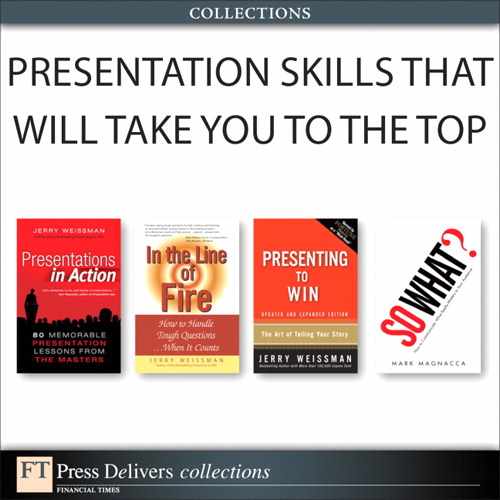24. Human Interest Stories: A Double Advantage: Two Ways to Use Anecdotes
Ronald Reagan was the master of the human interest story that preceded and followed the Lenny Skutnik story that you read in the previous chapter. Mr. Reagan had developed his talent for the human touch in his early days in radio, but he perfected the art of the anecdote during his presidency. Whenever Mr. Reagan spoke, he rarely missed an opportunity to refer to a dedicated student, a brave soldier, or a kind senior citizen, often by name. Presenters would do well to emulate The Great Communicator and intersperse their presentations with brief stories of people who are involved with their business’s product or service.
One of my frequent tasks as a presentation coach is to remind my clients to insert such descriptive examples in their presentations. I often do so during a run-through by interrupting their forward progress with the words, “For example ...” This usually brings a smile to the person’s face, and they immediately come up with an illustrative case study. More often than not, I have to make this prompt to people in the Life Sciences sector whose companies are involved in either drug development or medical devices. Their tendency is to make a deep dive into their esoteric technology, at which point I interrupt them and say, “Do you have any patients?” This brings that same smile to their faces, and they, too, come up with an illustrative case study.
You can employ such anecdotes in two ways: as supporting evidence for a particular point or to make the human interest story the through-line for the entire presentation.
Let’s say that you work for a drug company and you have a patient named John Smith. You can describe the illness John Smith has contracted, how many other John Smiths in the world have the same illness, how much money is spent on all those John Smiths, and how long they’ve suffered without a cure. Then you can talk about how your company’s drug cured John Smith, the patents you have on the drug, its regulatory status, its clinical status, its cost of manufacturing, its average selling price, and its potential profit margin. Finally, you can describe how John Smith was rehabilitated and reimbursed, thus explaining how your drug will sell in the managed care environment. The story of John Smith organizes and humanizes all the details of your company’s entire story.
John Smith is every man—and so is your audience.
